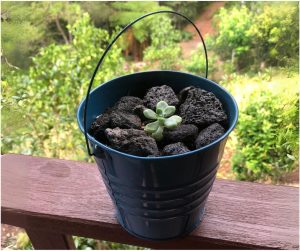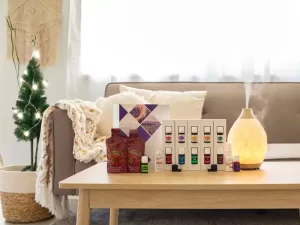What is Kombucha?
Kombucha is essentially fermented tea. Fermented foods are a rich source of probiotics (beneficial bacteria). It is a traditional “soft or fizzy drink” – a naturally low alcohol (1-2%) fermented beverage. It’s fermented by adding a Symbiotic Culture of Bacteria and Yeast (SCOBY) to sweetened tea.
Drinking Kombucha
Start slowly. 60mls to 120mls. You can even mix it with water to begin with.
Before you start
- Use a ceramic or glass jug. Don’t use a metal or plastic jug as harmful contaminants can then be transferred into the brew.
- BPA free Plastic taps are recommended to be used, as metals can react adversely with the brew. Why BPA free? Find out more here.
- Jars do not have lids as the brew needs to ‘breathe’ in order to ferment – therefore using cotton cloth is a natural way to allow this whilst keeping the Kombucha covered.
- Wash and rinse your jar thoroughly.
- Fill the jar with water leaving a gap of about 4-5 centimetres from the top. This space is needed so the kombucha culture has room to grow and breathe. While you have the jar filled with water make sure the tap is fitted properly and does not leak. If necessary tighten the tap by holding the back nut (inside the jar) then by holding the tap on the outside twist to tight. Discard the water and you are now ready to brew.
- Use filtered or spring water and organic or high quality herbs and teas. Never boil your water/tea in aluminium pans and preferably not a plastic kettle.
- The best types of tea to use are Black (may raise blood pressure and help increase body weight), green (may lower your blood pressure and help decrease body weight), oolong or white teas. You can use a herbal tea in between. Fresh herbs will require about 7 times the amount of dried herbs. Kombucha will enhance the properties of the tea or herbs you are using.
Basic Kombucha Recipe:
Depending on the amount of kombucha you wish to brew, multiply the recipe eg, if you wish to brew 6 litres multiply this recipe by 3.
Ingredients:
- 2 litres of boiling water
- 1/2 cup of sugar
- 2-4 teabags or 2-4 tablespoons of loose tea or herbs (If using fresh herbs multiply by 7)
- 1 healthy kombucha SCOBY or culture
- 1 cup of fermented kombucha or mother tea (If you do not have mother tea you will need to buy a bottle of already brewed kombucha)
Method:
- Add the sugar to the boiling water and stir until dissolved.
- Add the tea and or herbs to the water and allow steeping for 10-15 minutes.
- Then strain the tea or remove the tea bags.
- When the mixture is cooled, pour into your jar.
- Add the kombucha culture and the mother tea. Make sure to secure the top of the jar with muslin or cheesecloth to keep insects out. The cloth needs to be larger than the circumference of the jar so there is enough overhangs to secure the cloth with a rubber band.
Brewing Kombucha
- The time will vary depending on the amount of mother tea, the temperature, etc. It is more important to go by the taste of the tea, making sure it tastes like cider and the sugar has been changed over. The first batch will take about 8-10 days. If you are diabetic or want to lose weight you may want to wait about 14 days. During colder months you will need to add a couple more days and you may need to purchase a heated base to control the temperature.
- Once the initial fermentation period is complete and the SCOBY has been removed, you can consume your kombucha as is or choose to add additional flavouring.
- Bottling your kombucha and storing it in the fridge will stop further fermentation.
- If you decide to flavour your kombucha, you can either enjoy it immediately or ferment further, for a more developed taste in the final product. From fruit and juices to herbs and spices there are a wide variety of flavored drinks you can create.

Second Fermentation
- The basic idea with secondary fermentation is to drain off the liquid that has been brewing with your scoby. Instead of drinking it right away, pour it into a bottle with a swing-top cap or apply your own bottle caps to clean beer bottles, as though you were brewing beer. Leave some air space at the top, but not too much.
- Once bottled, you allow the kombucha to remain out at room temperature for 24 to 72 hours or longer, depending on your kombucha and your ambient temperature. I usually pick one bottle to test for fizziness. Be careful because the other bottles will be still fizzier since you will be opening the same one and releasing some of the carbonation. I have had bottles nearly explode after just three days, so test daily and make sure you are careful when opening.
- When the fizziness and tartness/taste are to your liking, simply refrigerate your brew! Be aware that refrigeration will slow fermentation, but it will still occur – so if you drink your kombucha over months instead of days or weeks, be sure to release the pressure and excess carbonation every few weeks, and realize that it will continue to consume sugar and grow tarter, even vinegary, over time.
Ratios for Flavouring Kombucha Tea
- If flavoring with fresh, frozen, or dried fruit, start with 10-30% fruit and 70-90% Kombucha.
- Using juice for flavouring? Start with 10-20% juice and 80-90% Kombucha.
- If flavoring with herbs, the variety and strength of herbs varies greatly. Experiment to come up with the best ratios and combinations for your taste preferences.
Looking after your SCOBY
- Don’t refrigerate the SCOBY
- Don’t dehydrate the SCOBY
- If your brew or SCOBY goes mouldy (blue, black or white fuzz) throw it out.
- Use a fresh starter liquid (at least 2 weeks old) taken from the top of the brew or SCOBY hotel.
- Use a SCOBY that has not done more than 10 brews, is the right size for the jug, are white or light tan in colour and when brewed grow yeast strands.
Continuous Fermentation
- This method keeps the kombucha continually brewing in the jar. It allows you to dispense it daily and top up the mixture as you go, as opposed to waiting for individual batches.
- To do this, allow your kombucha to brew for the desired time (see above). When ready, dispense 10% of the tea and store the unused portion in the refrigerator. Then add 10% of new tea. Do this the first couple of times then the tea in the jar will become stronger, and you can add 30% of new tea to the brew each time. For example a 6 litre brew will produce 1.8 litres of kombucha a day. Make sure you allow the new tea mixture to cool before adding. If you top up with new tea in the evening it will be ready by the next morning.
- It is recommend that you dispense the kombucha into glass jars and storing in the fridge for consumption. By putting the brew into the fridge it will prevent the kombucha from continuing to ferment and will keep for weeks.
Flavouring Ideas
- Raspberry and Lime – 1 drop Young Living Lime essential oil, 2-3 Tbs Raspberries, ½ tsp of sugar/honey/maple syrup and 500mls Kombucha – ferment for 3-7 days depending on how fizzy you like it).
- Lemon and Ginger – 1 drop Young Living Lemon essential oil, 1 tsp chopped ginger, ½ tsp sugar and 500mls Kombucha – ferment for 3-7 days depending on how fizzy you like it).
- Chia Seed Kombucha – 3 Tbs Chia seeds to 1 cup Kombucha – leave overnight.
- Choc Strawberry – ½ tsp raw cacao powder, 2-3 Tbs Strawberries, 500mls Kombucha – ferment for 3-7 days depending on how fizzy you like it).
Have fun with this DIY recipe!
And if you like natural DIY options, check out our video on Natural Cleaning Hacks here. Enjoy!










 Subscribe to Hot Oily Mumma
Subscribe to Hot Oily Mumma